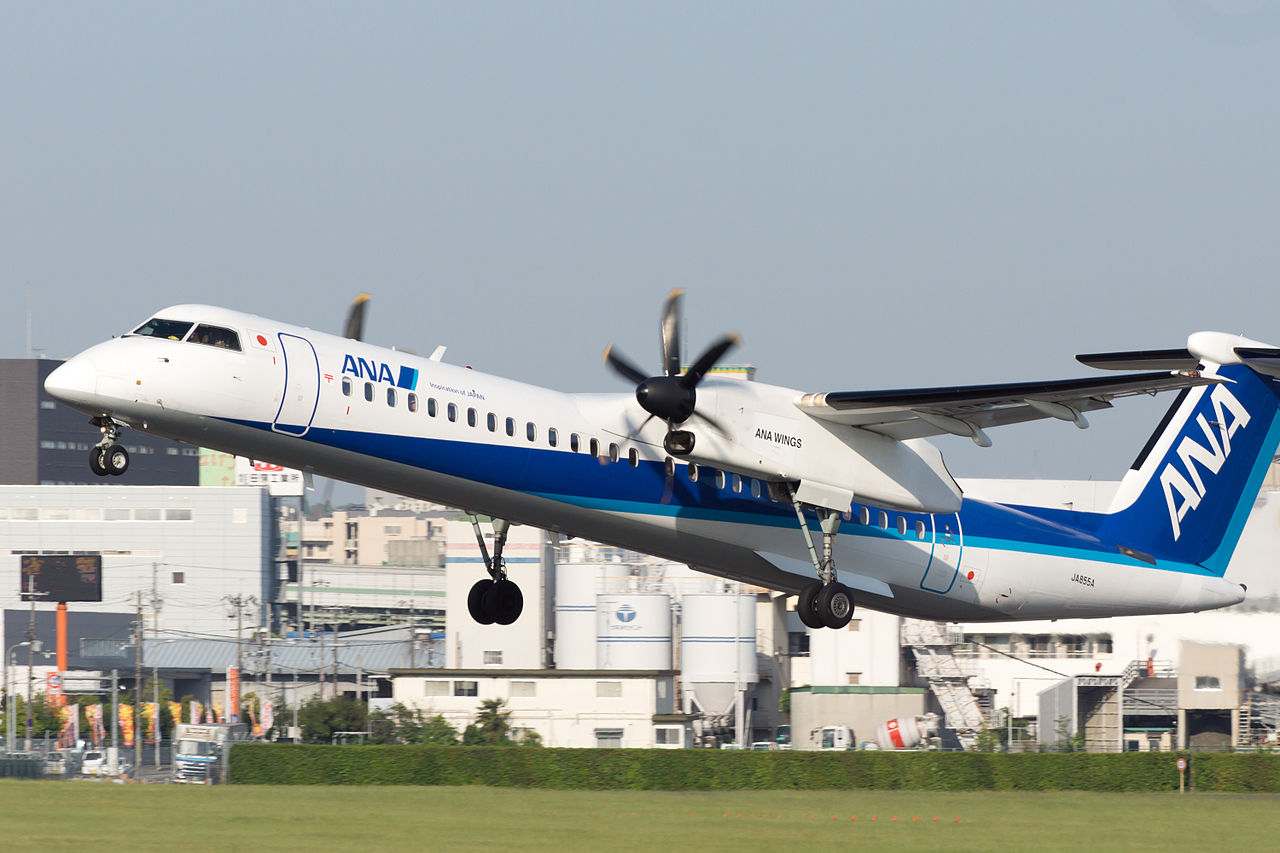According to local media outlet Japan Today, two All Nippon Airways (ANA) aircraft experienced a minor collision on Thursday, February 1st, at Itami Airport in Osaka, Japan.
Fortunately, according to Kansai Airports, the airport operator, no injuries were reported among the passengers or crew members involved in the incident.
The incident involved two De Havilland Canada DHC-8-400 turboprop aircraft and occurred around 10:10 AM local time on the tarmac of the domestic terminal.
No fire or fuel leaks were reported, and authorities are currently investigating the cause of the collision.
ANA Holdings said that flight NH-422, a passenger flight arriving from Fukuoka, was about to enter the tarmac after landing when it hit the right wing of another Q400, flight NH-1637.
NH-422, operated by JA855A, was carrying 69 passengers and crew, while NH-1637, operated by JA841A, had 73 passengers and crew on board.
Consequently, the incident resulted in the cancellation of 10 flights on that day. However, flight NH-1637 was able to depart after an aircraft change.
Not the first time this year
This incident follows two similar occurrences in Japan last month.
On January 18th, a Korean Air Airbus A330 made contact with a Cathay Pacific Airways Boeing 777 at an airport in Hokkaido amidst snowy weather, with no injuries reported.
The Korean Air plane, carrying 289 passengers, was being pushed back at New Chitose Airport when its left wing came into contact with the vertical stabilizer of the Cathay Pacific airliner. This incident resulted in considerable damage to both planes.
Earlier in January, a Japan Airlines Airbus A350 collided with a Japan Coast Guard Q300 on the runway of Tokyo’s Haneda Airport, tragically resulting in the deaths of five people on the Coast Guard aircraft.
The accident sent shockwaves in the aviation industry, especially with the death of the Coast Guard crew as a result of the incident.
There were also some positives: the rigidity of the carbon-fiber structure of the A350 made the safe evacuation of all 367 passengers and 12 crew members possible before being burned to the ground.
Source: Japan Today, Kyodo News, The Associated Press























Leave a comment